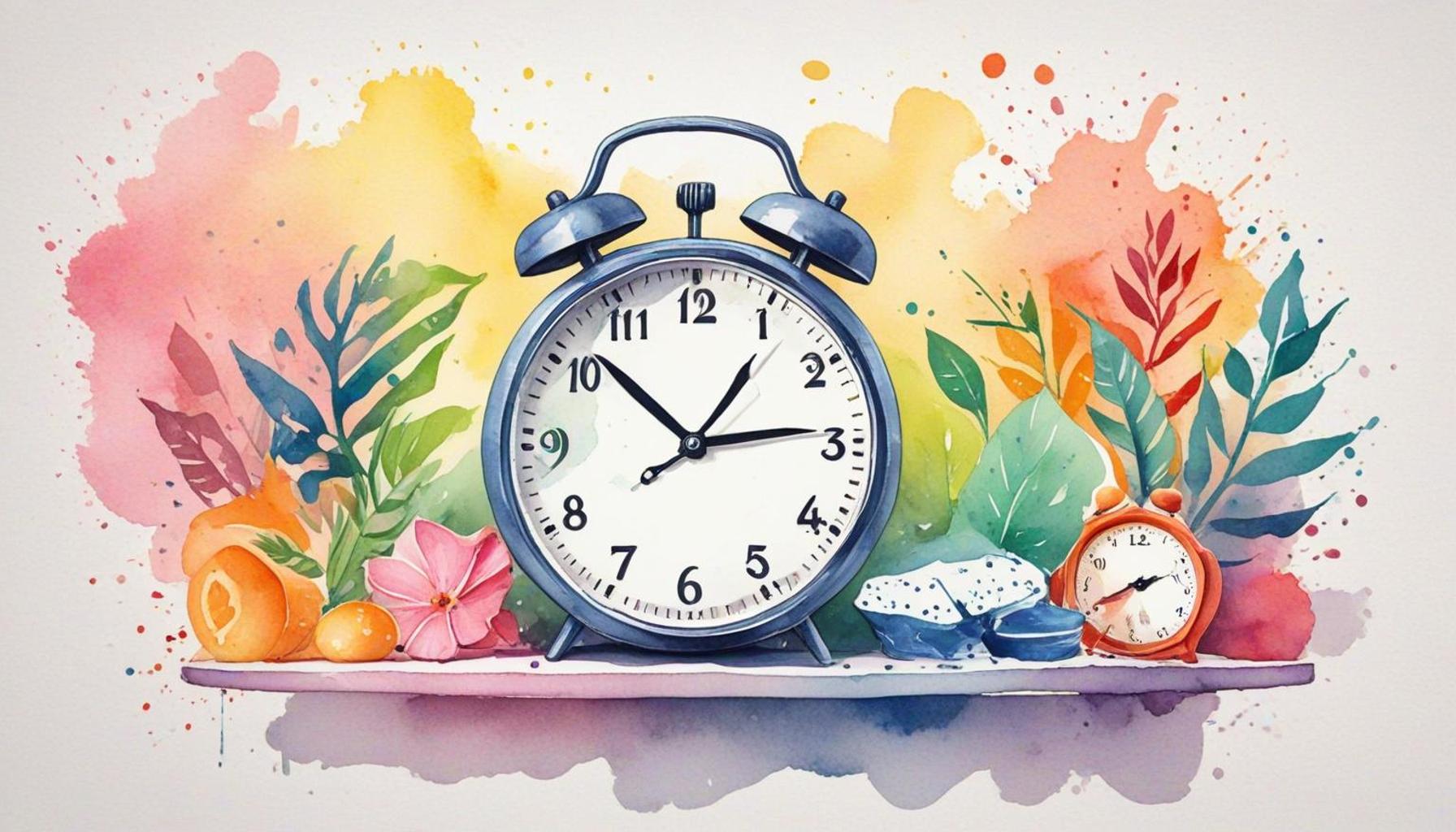Mindfulness and Minimalism: Techniques for Managing Time with Awareness

Understanding Mindfulness and Minimalism
The modern age bombards us with constant information, multitasking demands, and an endless list of obligations. This frenzy can lead to feelings of anxiety and overwhelm, prompting individuals to search for strategies that promote peace and clarity. The combination of mindfulness, which teaches us to anchor our thoughts in the present, and minimalism, which urges us to pare down our lives to what is truly essential, presents a compelling pathway to restore balance.
The Power of Mindfulness
Mindfulness is more than a mere buzzword; it’s a practice rooted in ancient teachings. By focusing on the current moment, whether through meditation or mindful breathing techniques, we can alleviate stress and gain better control over our thoughts and emotions. For instance, when eating, practicing mindfulness means savoring each bite without distractions, allowing you to appreciate flavors and textures fully. This practice can lead to healthier eating habits as you become more attuned to your body’s signals.
Significance of Minimalism
Minimalism, on the other hand, encourages a purposeful evaluation of what we allow into our lives, be it physical possessions, commitments, or even relationships. It seeks to reduce clutter, creating not just a tidy environment but also a simplified mental landscape. For example, a decluttered home can dramatically improve focus, as studies show that a chaotic environment can lead to increased anxiety levels. In practical terms, begin by adopting the 30-day decluttering challenge: eliminate one item on the first day, two on the second, and continue this pattern to discover how liberating a simplified space can be.
Practical Techniques to Embrace
Integrating these philosophies into daily living can take various forms. Here are some impactful methods you can incorporate:
- Set intentional goals: Reflect on your core values and aspirations. Rather than getting swept up in societal expectations, identify specific goals that align with your true self, such as focusing on personal growth, community engagement, or health improvements.
- Practice mindful scheduling: Rather than cramming your calendar with back-to-back meetings and tasks, allocate specific times for work and relaxation. Regular breaks can enhance productivity and mental focus, allowing time for mental clarity and rejuvenation.
- Declutter your space: Dedicate time each week to assess your physical surroundings. Ask yourself which items bring you joy or serve a purpose. By eliminating what you don’t need, you create a welcoming environment that nurtures positivity and focus.
Conclusion
Adopting mindfulness and minimalism can profoundly impact both your mental well-being and productivity. As you explore these concepts further, you open the door to a lifestyle that prioritizes what truly enriches your existence. With every small step you take toward a mindful and minimalist approach, you empower yourself to reclaim your time and enhance your daily experiences.

DISCOVER MORE: Click here to learn how minimalism can improve your mental well-being</p
Practical Techniques to Embrace
Integrating the principles of mindfulness and minimalism into one’s daily routine can significantly transform how we approach our time and commitments. By adopting some effective and practical techniques, individuals can reclaim their schedule and enhance their overall sense of well-being. Here are some compelling methods worth exploring:
- Create a Mindful Morning Routine: The way you start your day can set the tone for everything that follows. Consider establishing a morning ritual that incorporates mindfulness, such as a short meditation or mindful stretching. This practice helps clear your mind and prepares you for the day ahead, increasing your overall productivity and focus.
- Utilize Time Blocks: Instead of multitasking, which has been shown to decrease efficiency, experiment with time blocking—dedicating specific blocks of time for particular tasks. This structured approach not only reduces distractions but also encourages sustained periods of deep focus. For example, set aside a two-hour block in the morning for critical work tasks, followed by a well-earned break.
- Digital Minimalism: In our hyper-connected world, digital distractions can consume significant portions of our day. Commit to minimizing unnecessary screen time by limiting notifications, unsubscribing from emails that no longer serve you, and designating a specific time to check social media. This strategy can enhance mental clarity and give back valuable time.
- Reflection Journaling: At the end of each day, take a few moments to reflect on what went well and what could be improved. Journaling about your experiences can foster a deeper understanding of how you spend your time, revealing patterns in your habits. Are you using your time wisely? Are there commitments that detract from your core values? This technique not only enhances self-awareness but also facilitates personal growth.
- Practice Saying No: With an abundance of opportunities and obligations, it’s essential to remember that it’s entirely acceptable to decline commitments that do not align with your goals or values. Developing the strength to say no can create more space in your life for activities that genuinely fulfill you, thereby reducing overwhelm.
By implementing these techniques, individuals can begin to cultivate a lifestyle that is not only more intentional and less cluttered but also more fulfilling. Mindfulness and minimalism work hand in hand, creating a balance that allows for deeper engagement with the present moment while also managing time effectively. Experimenting with these practices can help identify which resonate most deeply with you, paving the way to a harmonious and productive existence.
| Category | Description |
|---|---|
| Mindfulness Practices | Engaging in techniques such as meditation, breathing exercises, and awareness techniques that enhance focus. |
| Reduced Stress and Anxiety | Incorporating mindfulness can alleviate stress, allowing for clearer decision-making and better time management. |
Mindfulness and minimalism are essential components that intertwine, offering profound benefits in managing one’s time effectively. By integrating mindfulness practices into daily routines, individuals can cultivate a deeper awareness of their thoughts and surroundings. This repeated practice allows for enhanced focus and increased productivity, often leading to a more fulfilling and organized life. Furthermore, the practice of mindfulness significantly contributes to a reduction in stress and anxiety. By fostering a state of calm, individuals can approach their tasks with a clearer mind. These techniques promote a more focused attention span, which is critical in today’s fast-paced world, thereby revolutionizing the way we manage our time.When individuals adopt these strategies, they naturally tend to prioritize essential tasks over trivial distractions. As awareness grows, they can minimize excess, ultimately leading to a more mindful existence. The exploration of these transformative practices can unlock a new dimension in both professional and personal spheres, encouraging readers to delve deeper into the world of mindfulness and minimalist living.
DIVE DEEPER: Click here to discover how intentional living can transform your organization and reduce stress</
Fostering a Mindful and Minimalist Environment
In addition to personal techniques, cultivating a mindful and minimalist environment can profoundly impact how individuals manage their time and commitments. The spaces we inhabit and the organization of our surroundings can either bolster or hinder our focus and productivity. Here are several effective strategies to create an environment that supports mindful living and minimalism:
- Declutter Your Space: A cluttered environment can create mental chaos, making it difficult to concentrate and manage your time effectively. Regularly assess your physical space and remove items that no longer serve a purpose or bring joy. Implement the KonMari Method, which emphasizes keeping only those things that “spark joy.” This principle can be applied not only to your belongings but also to your digital files, emails, and even relationships.
- Create Mindful Workspaces: Design spaces that foster focus and minimize distractions. This could involve arranging your workspace to prioritize natural light, using calming colors, or incorporating elements of nature such as plants. A well-organized and aesthetically pleasing workspace enhances concentration and encourages efficient time management.
- Incorporate Mindfulness Cues: Use physical reminders throughout your environment to prompt mindfulness. This could include items like a small sand timer to encourage breaks or sticky notes with motivational quotes that reinforce intention. These cues can gently remind you to return to the present moment, helping you manage time with greater awareness.
- Practice Mindful Eating: While often overlooked, meals are prime opportunities to practice mindfulness. Set aside time to enjoy your meals without distractions such as phones or television. This not only cultivates gratitude for your food but also encourages a slower pace, allowing you to savor the moment and establish better eating habits. A mindful approach to eating can lead to increased energy and enhanced focus throughout the day.
- Set Boundaries in Your Social Life: In today’s fast-paced world, social obligations can quickly pile up, leading to stress and a lack of personal time. Just as it is essential to say no to commitments that don’t align with your values, it’s equally important to create boundaries around your social life. Designate specific times for social activities and communicate these to friends and family. This helps maintain balance and ensures that your personal time is respected.
Creating a supportive environment is a crucial step in the journey toward meaningful time management through mindfulness and minimalism. By focusing on our surroundings and establishing intentional practices, individuals can empower themselves to lead more purposeful lives. Whether through decluttering, designing mindful workspaces, or setting boundaries, these strategies collectively guide one towards a life enriched with awareness and fulfillment.
DIVE DEEPER: Click here to learn more
Conclusion: Embracing Awareness for a Purposeful Life
In conclusion, mindfulness and minimalism provide individuals with powerful techniques for managing time in a world saturated with distractions and obligations. By cultivating a mindful approach to each moment and consciously minimizing the excesses in our lives, we can reclaim precious time and enhance our overall well-being. The integration of these principles not only transforms our personal environments but also reshapes our mindset, allowing us to engage with our tasks and relationships more intentionally.
Practicing mindfulness through simple daily rituals, such as mindful eating and setting clear boundaries, encourages reflection and prioritization. Meanwhile, minimalism allows for a reduction of physical and mental clutter that often weighs us down, creating space for what truly matters. Together, these approaches empower individuals to make conscious choices, foster deeper connections, and allocate time to pursuits that bring genuine joy, whether it’s spending time with loved ones or indulging in creative passions.
As the journey towards mindfulness and minimalism unfolds, it is crucial to continually assess and adapt our techniques. Embrace the process as an opportunity for growth, and remember that every small step contributes to an overarching sense of clarity and purpose. For those seeking to explore these concepts further, various resources and communities are dedicated to this transformative way of living. By committing to this path, we cultivate not only our time but also our lives, leading to a more rewarding and fulfilling existence.



